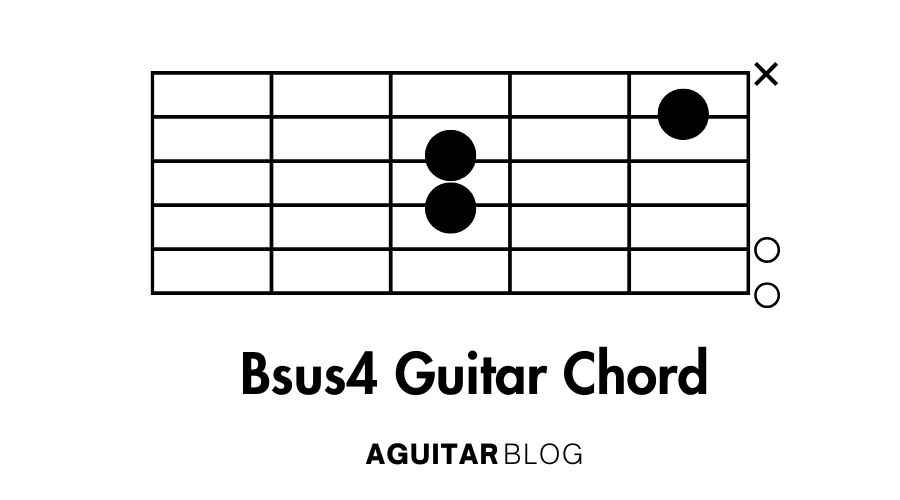The Bsus4 guitar chord (B suspended 4th) is a bright and dynamic chord that creates a sense of tension, often resolving beautifully to a B major or B minor chord. It is commonly used in rock, pop, and acoustic music to add a unique texture to progressions.
What is the Bsus4 Guitar Chord?
The Bsus4 chord replaces the major 3rd (D#) in a B major chord with a perfect 4th (E). This gives the chord a suspended and unresolved quality.
The notes in the Bsus4 chord are:
- B (Root)
- E (Perfect 4th)
- F# (Perfect 5th)
How to Play the Bsus4 Guitar Chord

Here are a few common voicings for the Bsus4 chord, suitable for beginners and intermediate players:
A. Open Position Bsus4 (Simplified Version)
- Place your index finger on the 2nd fret of the 5th string (A).
- Place your ring finger on the 4th fret of the 4th string (D).
- Place your pinky finger on the 4th fret of the 3rd string (G).
- Strum from the 5th string down, muting the low E string.
B. Barre Chord (Root on 5th String, 2nd Fret)
- Barre your index finger across the strings at the 2nd fret from the 5th string (A) to the 1st string (high E).
- Place your ring finger on the 4th fret of the 4th string (D).
- Place your pinky finger on the 4th fret of the 3rd string (G).
- Strum from the 5th string down.
C. Barre Chord (Root on 6th String, 7th Fret)
- Barre your index finger across all six strings at the 7th fret.
- Place your ring finger on the 9th fret of the 5th string (A).
- Place your pinky finger on the 9th fret of the 4th string (D).
- Strum all six strings.
Video Tutorial
For visual learners, check out this step-by-step video tutorial to master the Bsus4 guitar chord. Watch as the chord is broken down with clear finger positioning and strumming tips.
Common Mistakes to Avoid
- Muted Strings: Ensure that each string rings clearly by applying even pressure with your fingers.
- Over-Strumming: Be mindful of not playing strings that aren’t part of the chord (e.g., avoid the low E string in open positions).
- Improper Finger Placement: Place your fingers close to the frets for clean, buzz-free sound.
Tips for Playing the Bsus4 Chord
- Focus on Finger Strength: Barre chords, especially with the B root, can be challenging. Practice pressing down evenly across the strings.
- Use Alternate Picking: Test each string individually to ensure all notes ring clearly.
- Experiment with Strumming Patterns: Use dynamic strumming to bring out the suspended tension of the chord.
Common Progressions Featuring Bsus4
The Bsus4 chord works beautifully in progressions that create tension and resolution. Here are some examples:
- Bsus4 – B – F# (Classic rock progression)
- Bsus4 – E – B (Pop/acoustic progression)
- Bsus4 – G#m – E – F# (Modern ballad progression)
Related Chords to Bsus4
Explore these related chords for more musical variety:
- B major: Resolves naturally from Bsus4.
- B minor: Adds a darker tone to progressions.
- E major: Shares common tones with Bsus4.
Why Learn the Bsus4 Chord?
The Bsus4 chord is essential for creating tension and dynamic shifts in your music. Whether you’re playing rock anthems, soulful ballads, or pop hits, this chord provides a versatile and unique sound that can elevate your progressions.
Conclusion
Mastering the Bsus4 guitar chord unlocks new creative possibilities in your playing. Its rich, suspended quality makes it a favorite for adding emotional depth and tension to music. Practice its various voicings, incorporate it into progressions, and enjoy the versatility it brings to your sound.
